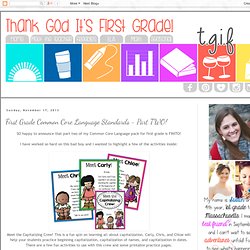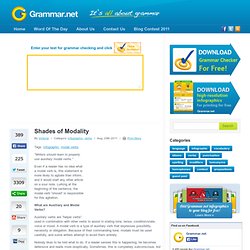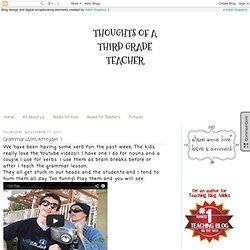

Verb tenses with timelines - learn English,verb,tenses,grammar,english. 19 Jokes All Grammar Nerds Will Appreciate. Understanding modals of necessity: must, have got to, have to [infographic] Buy this poster Like other modal verbs, modals of necessity are guilty of strange behavior.
![Understanding modals of necessity: must, have got to, have to [infographic]](http://cdn.pearltrees.com/s/pic/th/understanding-modals-necessity-88195312)
Learn about their feisty habits with this infographic. What is a Modal Verb? Modals are small helping verbs that are used in past, present and future tense to convey ideas such as prohibition, obligation, necessity, permission and ability. The list includes will, should, would, can, may, might and must. <a href=" src= alt="Grammar.net" /></a> [Infographic provided by <a href=" <a href=" src= alt="Grammar.net" /></a> [Infographic provided by <a href=" Click here to download high resolution poster. Prohibition: “You can’t eat these.”Obligation: “I have to call home later.”Necessity: “They must leave immediately.”Permission: “Rachel can play outside if she likes.”Ability: “My dog can swim.” Modals of Necessity There are three: have to, have got to and must. “Must” is the most powerful, it is most often used in writing and it is rarely found in questions.
It’s Hard to be a Verb. 5%C2%BA+C.A.L. First Grade Common Core Language Standards - Part TWO! SO happy to announce that part two of my Common Core Language pack for first grade is FINITO!

I have worked so hard on this bad boy and I wanted to highlight a few of the activities inside: Meet the Capitalizing Crew! This is a fun spin on learning all about capitalization. Carly, Chris, and Chloe will help your students practice beginning capitalization, capitalization of names, and capitalization in dates. There are a few fun activities to use with this crew and some printable practice pages. Roll, Spell, and Cover! Be a Wordsmith! Categories: Students spin the spinner and sort words into different categories based on their meaning. Root word, Prefix, and Suffix anchor charts! After learning all about prefixes and suffixes, students make numerous little flip books and create sentences with each word. List it: Students practice using commas correctly with this activity!
Multiple meaning match-ups! These are just a few of many different activities in Part 2 of the pack! Shades of Modality. “Writers should learn to properly use auxiliary modal verbs.”

Even if a reader has no idea what a modal verb is, this statement is more likely to agitate than inform, and it would start any other article on a sour note. Lurking at the beginning of the sentence, the modal verb “should” is responsible for this agitation. What are Auxiliary and Modal Verbs? Auxiliary verbs are “helper verbs” used in combination with other verbs to assist in stating tone, tense, condition/state, voice or mood. A modal verb is a type of auxiliary verb that expresses possibility, necessity or obligation. Nobody likes to be told what to do. Tricky Little Modals <a href=" src= alt="Grammar.net" /></a> [Infographic provided by <a href=" You can download high resolution poster here. Embed this image to your site: Grammar.net.
Grammar With Attitude!! :\ We have been having some verb fun the past week.

The kids really love the Youtube videos!! I have one I do for nouns and a couple I use for verbs. I use them as brain breaks before or after I teach the grammar lesson. They all get stuck in our heads and the students and I tend to hum them all day. Too funny! This video is super funny!! We discussed irregular verbs today and I showed this video just after I introduced them. I also created a sassy irregular verbs chart! This is the one I made for verbs. My lovely daughter helped me color it. We did nouns last week. Thanks for stopping by and taking a look around!! I hope you found something that you can use in your room!! Having Fun With Fluency! Part 2 — Strategies Readers Will Enjoy.